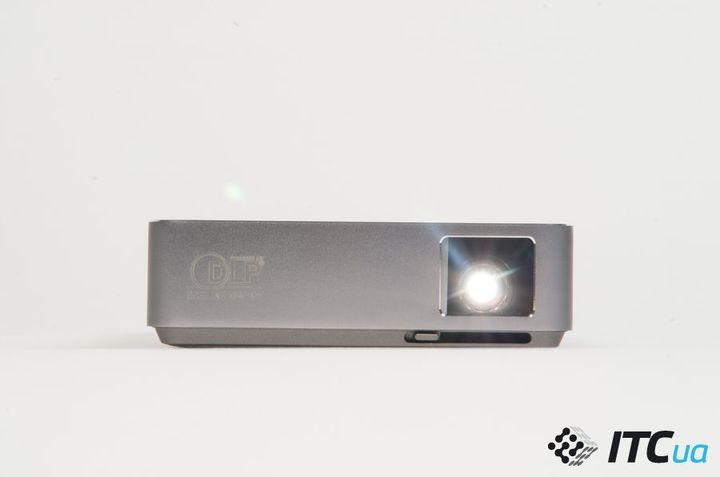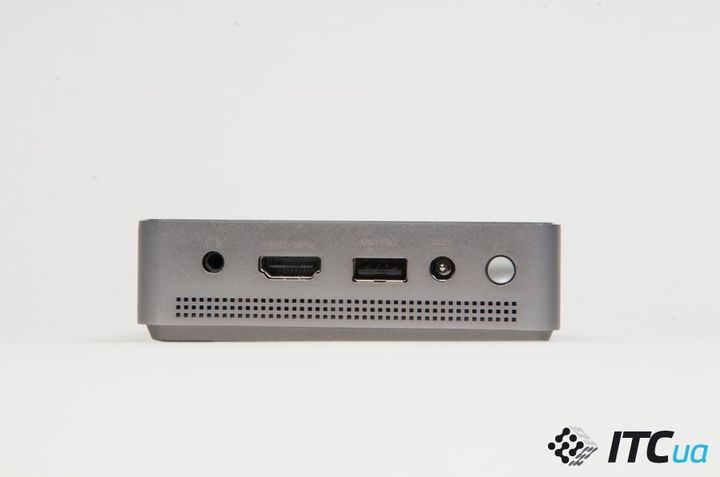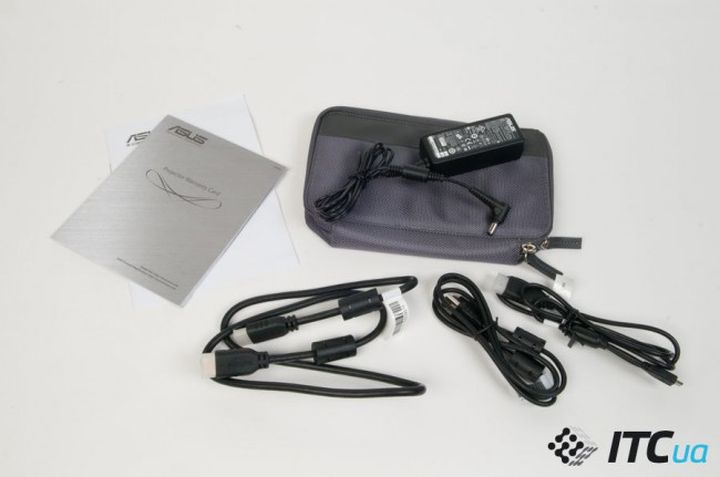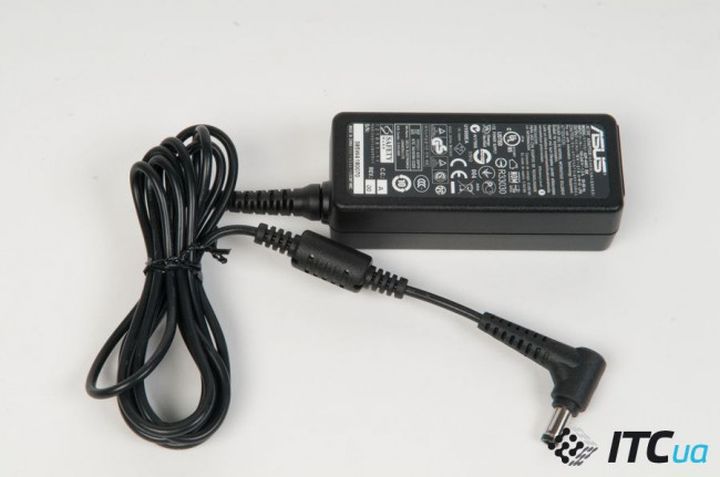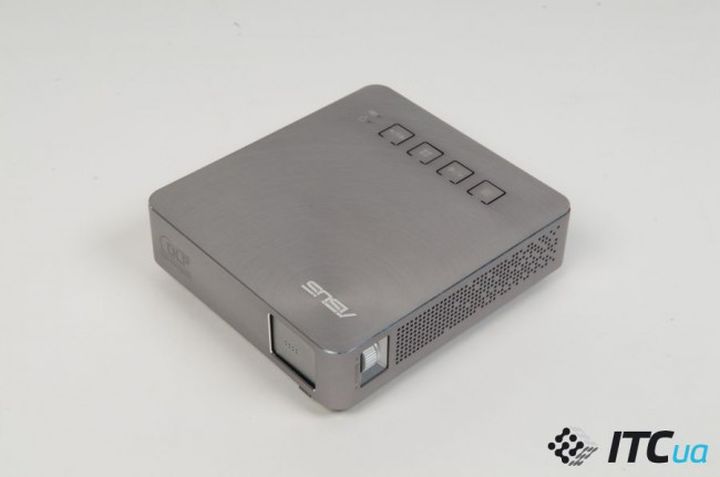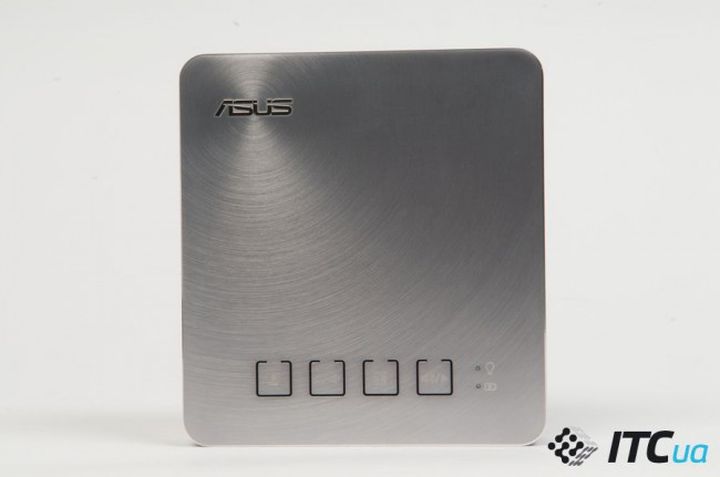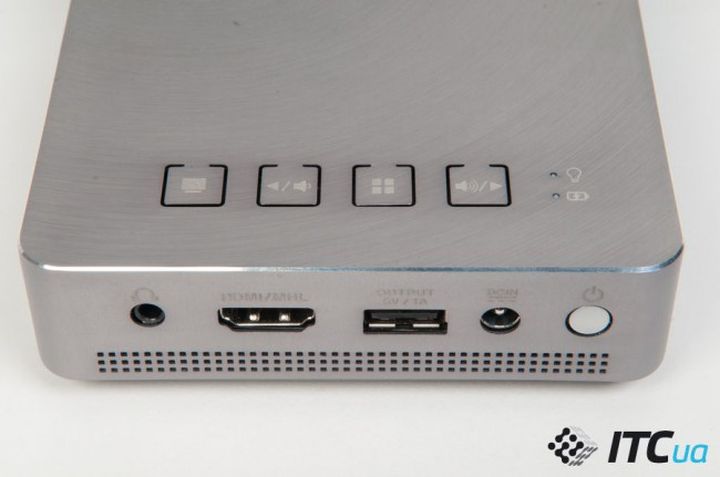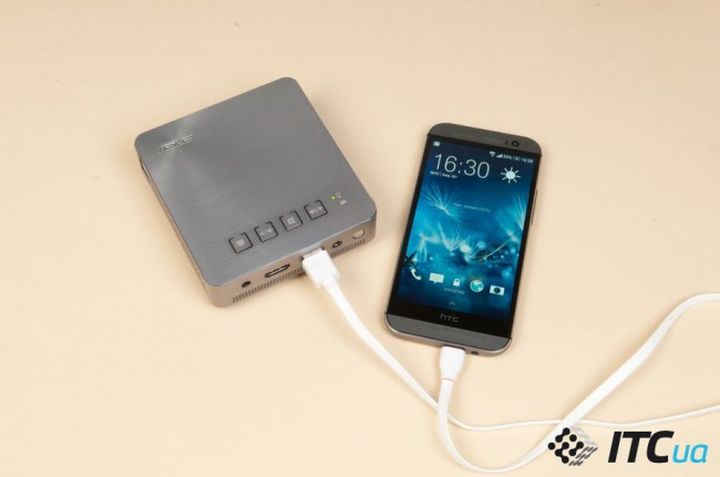Overview of mobile projector ASUS S1
The company ASUS has, among other things, a relatively small line of portable projectors, focused on office use, and with each new device in this lineup is more “leaves” in the mobile direction – so the previous model, ASUS P2B equipped with built-in battery allows you to use it offline. And now the new ASUS S1 logically develops this idea – it can be used as powerbank for charging smartphones. What else can offer this projector?
Options
The projector comes in a small box of cardboard gray “steel” color. Found inside the actual device itself, power adapter, a carrying case two – only for the first projector (with a slot opposite the USB-port for convenient charging smartphone), the second a little more, for the projector and the PSU. Also included with the projector are all necessary cables – the usual HDMI, MHL (micro USB – HDMI) and the usual USB-cable for charging smartphones.
Design
ASUS S1 quite small (much less the same ASUS P2B), the body is made of gray brushed aluminum. Design looks concise and solid, the device looks good in “expensive”. Lens, which in previous models partially protrude from the body, is completely buried here – special lens shutter is closed, and to focus on (which was previously performed using the ring on the lens) is now the small wheel on the side edge.
The top panel has buttons to control the projector and two indicators – activity and battery charge.
Side faces “speckled” vents located behind the headphone output, combined with MHL port HDMI, USB-port for powering mobile devices (5 V, 1 A), power connector, and a recessed power button.
Bottom plastic, worth projector on two rubberized feet, which significantly impede slip device on a smooth surface (though not eliminate it completely). Also ASUS S1 has a tripod socket.
Menu
To control the projector using four buttons, carved in metal housing. Embossed numbers on them are missing, as well as lights in the dark – so it feels to cope with them is not very convenient. One of the buttons is responsible for switching Splendid (in this case, in contrast to “monitor” version of this function, it contains options Theater, Standard, Presentation and Battery – the first two are only available when running on the network). Cursor keys left / right menu can also be used to adjust the volume.
Actually the menu here very succinctly – this single-level tape containing volume, brightness and contrast, switching modes Splendid, aspect ratio (Auto, 4:3 and 16:9), select the projector position (front / rear screen and desk / ceiling ). Paragraph Setup available for only two options – language selection menu and reset all settings to factory defaults.
In this paper,
ASUS S1 – DLP-projector, with the matrix diagonal 0.3 “(from ASUS P2B – 0.45”), light source – RGB-LEDs. MegaPixel also become less – 854 × 480 pixels, and decreased the magnitude of flux – in this model, it is 200 ANSI-lumens (as with other portable models – ASUS P1M). Thus, it can be attributed to the “upper range” pocket “pico projectors” (which he usually tens ANSI-lumens, but in some cases can reach up to 200-300).
But the built-in battery capacity compared to ASUS P2B doubled – up to 6000 mAh (vs 2950 mAh). Its full charge, according to the manufacturer, enough for 3 hours of the projector (although in economy mode, with luminous flux in lumens ANSI-50). Of course, 3 hours – to put it mildly, a lot (it is hardly possible to imagine a situation in which a portable projector will have to work offline so long), so the main purpose of such a capacious battery – use the device as powerbank (standalone charger for smartphones). Charge current – 1 A – comparable to conventional chargers, so that the charging time of the projector will be about the same as from the network.
The only option “feed content” on the projector is HDMI-port: ASUS S1 in no other video inputs (recall earlier models of projectors and met ASUS VGA, and composite inputs), no card reader or USB-port for connecting external drives with media content . Accordingly, media player and built (as it was in the ASUS P2B) in ASUS S1 also not – in this respect is a pure-output. It is possible that the rejection of media playback on its own was due to output images to a smartphone connected to the projector, which, in general, do the task much better than the comparatively limited in its capabilities built-in media player.
Like any portable projector, ASUS S1 is designed for operation in relatively small spaces – it can not create a home theater with a diagonal of 150 “, it works for shorter distances and more” compact “screen. Thus, the stated working distance to the screen – from 73 cm to two meters, while diagonal ranges 30-100 “(at the maximum distance to be expected brightness decreases significantly).
In our conditions, at a distance of 1.2 m screen size is 50 “, while the brightness (in a shaded site) was more than sufficient. However, when the ambient lighting, of course, the picture faded instantly.
The projector is not possible to zoom – to change the size of the screen need to move the projector itself in space, which is not very convenient, especially when used in unprepared areas, which, in fact, he is focused. Used to focus on the side of the wheel next to the lens, it rotates smoothly and accurately lock on sharpness, but ease of use is still somewhat lower than previous models – mainly due to its small size and a recessed.
The image is projected at a slight upward angle – so that the projector can stand in the center of the table, and the table top will not overlap the frame.
A resolution of 854 × 480 pixels and is not intended to use the projector as part of a home theater or for reading documents with lots of small text – but for presentations or watching footage from a smartphone photo / video it will be quite enough.
When looking closely at the projected image is noticeably “diamond-shaped” structure formed using micromirrors image, but it is fine enough in order not to get too caught the eye with a typical distance over which the viewer.
Under ideal conditions, the projector shows quite bright and juicy picture, with realistic colors and a decent (though not perfect) shadow detail. However, we should note that in the dark areas of the image appear digital noise – noticeable at close range, “grain”, and the darker the image, the larger the “grain.” However, from a distance of 2 meters, it is not felt.
Color gamut from ASUS S1 wide enough appreciably exceeds sRGB (perhaps with a “shortage” in the blue area). Gamma overstated (the peak in the darkest areas due to the fact that the readings are taken not in complete darkness, and the black color of the screen was a little lighter than it should be), this leads to the rich viewing experience, with the disappearance of some parts in the deep shadows. Color temperature is also too high, which makes the picture slightly coldish.
Color gamut, color temperature graph and gamma curve on grayscale mode Standard:
In general, ASUS S1 impresses – compact size, efficient design, good for its class, the quality of the image. Unlike other portable projectors, business-oriented application, ASUS S1 is more “mobile” device than the office – thanks to built-in battery and functions powerbank it is perfectly suited for showcasing photos / videos from your smartphone “field” (or simply recharge it, if the smartphone is dead at the most inopportune moment).
Resource on meterialy: itc.ua
